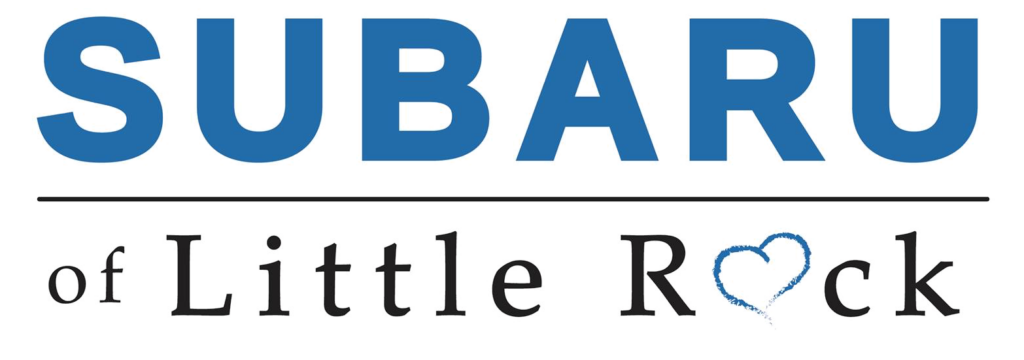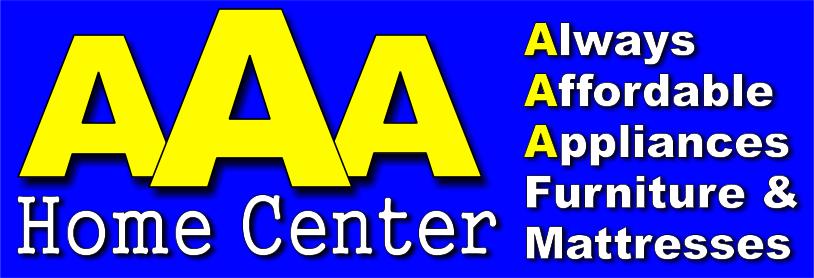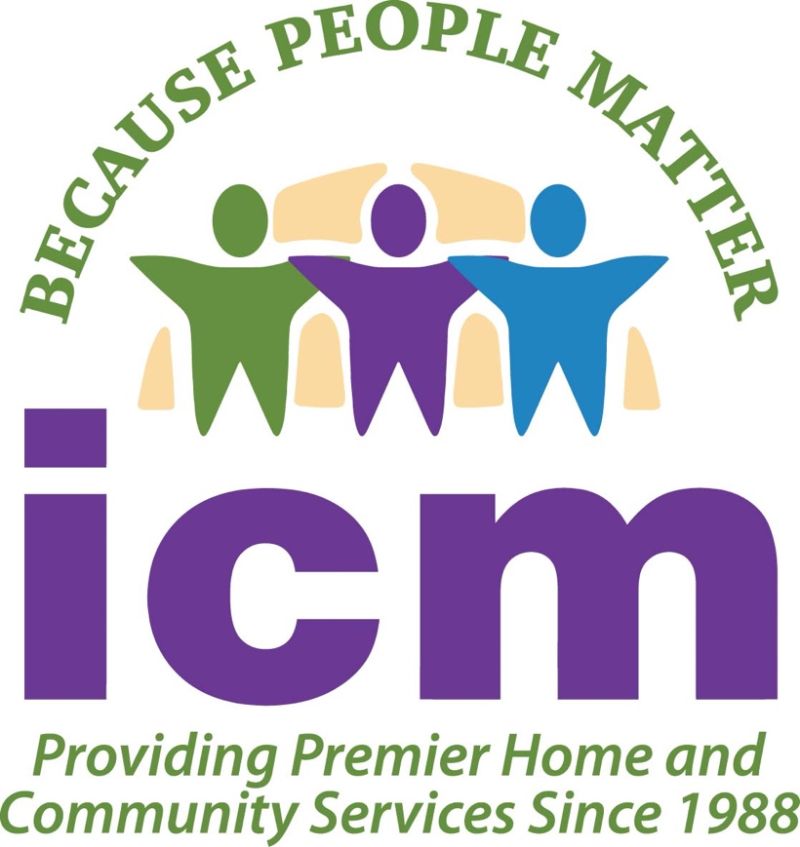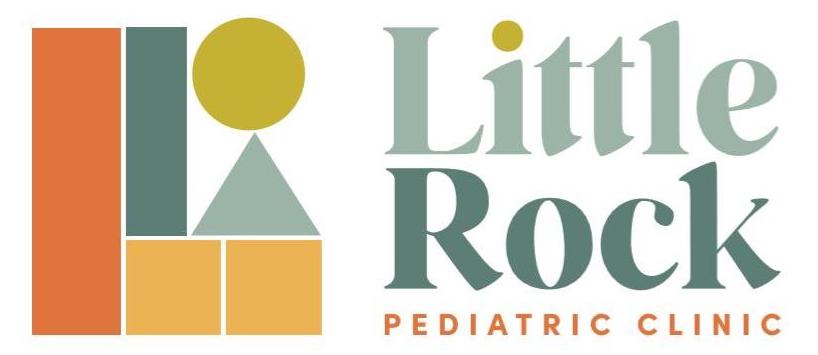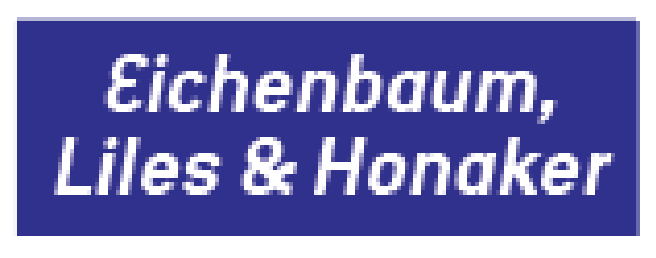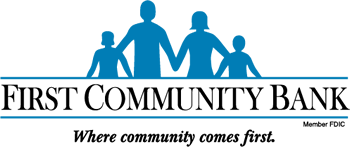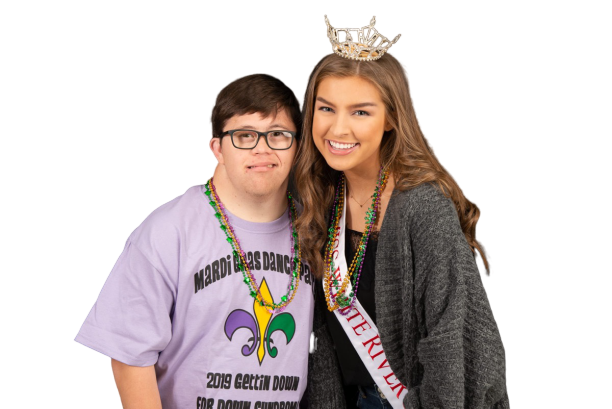BY GEORGE T. CAPONE, M.D.
ADAPTED FROM DISABILITY SOLUTIONS VOLUME 3, ISSUES 5 & 6
During the past 10 years, I’ve evaluated hundreds of children with Down syndrome, each one with their own strengths and weaknesses, and certainly their own personality. I don’t think I’ve met a parent who does not care deeply for their child at the clinic; their love and dedication is obvious. But some of the families stand out in my mind. Sometimes parents bring their child with Down syndrome to the clinic—not always for the first time—and they are deeply distraught about a change in their child’s behavior or development. Sometimes they describe situations and isolated concerns that worry them such as their child has stopped learning new signs or using speech. He is happy playing by himself, seeming to need no one else to make the odd game (shaking a toy, lining things up) he is playing fun. When they call to him, he doesn’t look at them. Maybe he isn’t hearing well? He will only eat 3 or 4 foods. The suggestion of a new food, or even an old favorite, brings about a tantrum like no other. He is constantly staring at the lights and ceiling fans. Not just while they pass by, but obsessively. Getting him to stop staring at the lights is sometimes difficult and may result in a scene. He requires a certain order to things. Moving a chair to another spot in the room upsets him until it is returned to its usual spot.
Some families do their own research and mention they think their child may have autistic spectrum disorder (ASD) along with Down syndrome. Others have no idea what may be happening. They do know it isn’t good and they want answers now. This article is for families in situations like this and other, similar ones. If your child has been dually-diagnosed with Down syndrome and autistic spectrum disorder (DS-ASD) or if you believe your child may have ASD, you will learn a little more about what that means, what we are learning through data collection, and insights to the evaluation process.
There is little written in the form of research or commentary about DS-ASD. In fact, until recently, it was commonly believed that the two conditions could not exist together. Parents were told their child had Down syndrome with a severe to profound cognitive impairment without further investigation or intervention into a diagnostic cause. Today, the medical profession recognizes that people with Down syndrome may also have a psychiatric-related diagnosis such as ASD or Obsessive Compulsive Disorder (OCD).
Because this philosophy is relatively new to medical and educational professionals, there is little known about children and adults with DS-ASD medically or educationally.
Over the past six years we have gathered data and studied DS-ASD at Kennedy Krieger Institute. We have collected and analyzed data from clinical medical evaluations, psychological and behavioral testing, and MRI scans of the brain. We now follow a cohort of approximately 30 children with DS-ASD through the Down syndrome Clinic, possibly the largest group of children with DS-ASD that has been gathered.
What Should I Look For?
SIGNS AND SYMPTOMS
As parents, it is common, if not expected, for you to worry at times about your child’s development. It is also common to hear only part of the criteria for a particular label. This is especially true when it comes to DS-ASD because there is little information available on the topic. This can be especially troublesome if your child suddenly picks up a new habit you associate with ASD such as incessantly shaking toys. The children we have seen at Kennedy Krieger Institute who have DS-ASD present symptoms in several different ways, which we have separated into two general groups:
GROUP ONE
Children in this first group appear to display “atypical” behaviors early. During infancy or toddler years you may see:
- Repetitive motor behaviors (fingers in mouth, hand flapping),
- Fascination with and staring at lights, ceiling fans, or fingers,
- Extreme food refusal,
- Receptive language problems (poor understanding and use of gestures) possibly giving the appearance that the child does not hear, and
- Spoken language may be highly repetitive or absent.
- Along with these behaviors, other medical conditions may also be present including seizures, dysfunctional swallow, nystagmus (a constant movement of the eyes), or severe hypotonia (low muscle tone) with a delay in motor skills.
If your child with Down syndrome is young, you may see only one or a few of the behaviors listed above. This does not mean your child will necessarily progress to have autistic spectrum disorder. It does mean that they should be monitored closely and may benefit from receiving different intervention services (such as sensory integration) and teaching strategies (such as visual communication strategies or discrete trial teaching) to promote learning.
GROUP TWO
A second group of children are usually older. This group of children experience a dramatic loss (or plateauing) in their acquisition and use of language and social-attending skills. This developmental regression may be followed by excessive irritability, anxiety, and the onset of repetitive behaviors.
This situation is most often reported by parents to occur following an otherwise “typical” course of early development for a child with Down syndrome. According to parents, this regression most often occurs between ages three to seven years.
The medical concerns and strategies for these two groups may be different. There is not enough information available to know at this time. However, regardless of how or when ASD is first discovered, children with DS-ASD have similar educational and behavioral needs once they are identified.
ASD 101: A Crash Course
SIGNS AND SYMPTOMS VARY
Although we are documenting some similarities in the way DS-ASD presents, autism is what is considered a spectrum disorder. This means every child with DS-ASD will be different in one way or another. Some will have speech, some will not. Some will rely heavily on routine and order, and others will be more easy-going. Combined with the wide range of abilities seen in Down syndrome alone, it can feel mystifying. It is easier if you have an understanding of ASD disorders separate from Down syndrome.
Autism, autistic-like condition, autistic spectrum disorder (ASD), and pervasive developmental disorder (PDD) are terms that mean the same thing, more or less. They all refer to a neurobehavioral syndrome diagnosed by the appearance of specific symptoms and developmental delays early in life. These symptoms result from an underlying disorder of the brain, which may have multiple causes, including Down syndrome. At this time, there is some disagreement in the medical community regarding the specific evaluations necessary to identify the syndrome or the degree to which certain “core-features” must be present to establish the diagnosis of ASD in a child with Down syndrome. Unfortunately, the lack of specific diagnostic tests creates considerable confusion for professionals, parents, and others trying to understand the child and develop an optimal medical care and effective educational program.
There is general agreement that:
- Autism is a spectrum disorder: it may be mild or severe.
- Many of the symptoms overlap with other conditions such as obsessive-compulsive disorder (OCD) or attention deficit hyperactivity disorder (ADHD).
- ASD is a developmental diagnosis. Expression of the syndrome varies with a child’s age and developmental level.
- Autism can co-exist with conditions such as intellectual disability, seizure disorder, or Down syndrome.
- Autism is a life-long condition.
The most commonly described areas of concern for children with
ASD include:
- Communication (using and understanding spoken words or signs),
- Social skills (relating to people and social circumstances),
- Repetitive body movements or behavior patterns.
Of course there is inconsistency in any of these areas in all children, especially during early childhood.
Children who have ASD may or may not exhibit all of these characteristics at any one time nor will they consistently demonstrate their abilities across similar circumstances. Some of the variable characteristics of ASD we have commonly observed in children with DS-ASD include:
- Unusual response to sensations (especially sounds, lights, touch or pain)
- Food refusal (preferred textures or tastes)
- Unusual play with toys and other objects
- Difficulty with changes in routine or familiar surroundings
- Little or no meaningful communication
- Disruptive behaviors (aggression, throwing tantrums, or extreme non-compliance)
- Hyperactivity, short attention, and impulsivity
- Self-injurious behavior (skin picking, head hitting or banging, eye-poking, or biting)
- Sleep disturbances
- History of developmental regression (esp. language and social skills)
Sometimes these characteristics are seen in other childhood disorders such as attention deficit hyperactivity disorder or obsessive compulsive disorder.
Sometimes ASD is overlooked or considered inappropriate for a child with Down syndrome due to cognitive impairment. For instance, if a child has a high degree of hyperactivity and impulsivity only the diagnosis of ADHD may be considered. Children with many repetitive behaviors may only be regarded as having stereotypy movement disorder (SMD), which is common in individuals with severe cognitive impairments.
Most parents agree that severe behavior problems are usually not easily fixed. Finding solutions for behavioral concerns is one reason families seek help from physicians and behavior specialists. Compared to other groups of children with cognitive impairment, those with Down syndrome, as a group, are less likely to have behavioral or psychiatric disorders. When they do, it is sometimes referred to as having a “dual-diagnosis.” It is important for professionals to consider the possibility of a dual-diagnosis (Down syndrome with a psychiatric condition such as ASD or OCD) because:
- It may be responsive to medication or behavioral treatment, and
- A formal diagnosis may entitle the child to more specialized and effective educational and intervention services.
If you think your child may have ASD disorder, share this before or during your evaluation. Don’t wait to see what might happen.
Incidence
Estimating the prevalence or occurrence of ASD disorder among children and adults with Down syndrome is difficult. This is partly due to disagreement about diagnostic criteria and incomplete documentation of cases over the years. Currently, estimates vary between 1 and 10%. I believe that 5-7% is a more accurate estimate. This is substantially higher than is seen in the general population (.04%) and less than other groups of children with intellectual disability (20%). Apparently, the occurrence of trisomy 21 lowers the threshold for the emergence of ASD in some children. This may be due to other genetic or other biological influences on brain development.
A review of the literature on this subject since 1979 reveals 36 reports of DS-ASD (24 children and 12 adults). Of the 31 cases that include gender, an astonishing 28 individuals were males. The male-to-female ratio is much higher than the ratio seen for autism in the general population. Additionally, in reports that include cognitive level, most children tested were in the severe range of cognitive impairment.
Generally, the cause of ASD is poorly understood, whether or not it is associated with Down syndrome. There are some medical conditions in which ASD is more common such as Fragile-X syndrome, other chromosome anomalies, seizure disorder, and prenatal or perinatal viral infections. Down syndrome should be included in this list of conditions. The impact of a pre-existing medical condition such as Down syndrome on the developing brain is probably a critical factor in the emergence of ASD disorder in a child.
Brain Development and ASD
The development of the brain and how it functions is different in some way in children with DS-ASD than their peers with Down syndrome. Characterizing and recording these differences in brain development through detailed evaluation of both groups of children will provide a better understanding of the situation and possible treatments for children with DS-ASD.
A detailed analysis of the brain performed at autopsy or with magnetic resonance imaging (MRI) in children with autism shows involvement of several different regions of the brain:
- The limbic system, which is important for regulating emotional response, mood and memory,
- The temporal lobes, which are important for hearing and normal processing of sounds,
- The cerebellum, which coordinates motor movements and some cognitive operations, and
- The corpus callosum, which connects the two hemispheres of the cortex together.
At Kennedy Krieger Institute, we have conducted MRI studies of 25 children with DS-ASD. The preliminary results support the notion that the cerebellum and corpus callosum is different in appearance in these children compared to those with Down syndrome alone. We are presently evaluating other areas of the brain, including the limbic system and all major cortical subregions, to look for additional markers that will distinguish children with DS-ASD from their peers with Down syndrome alone.
Brain Chemistry and ASD
The neurochemistry (chemistry of the brain) of autism is far from clear and very likely involves several different chemical systems of the brain. This information provides the basis for medication trials to impact the way the brain works in order to elicit a change in behavior.
An analysis of neurochemistry in children with ASD alone has consistently identified involvement of at least two systems.
- Dopamine: regulates movement, posture, attention, and reward behaviors; and
- Serotonin: regulates mood, aggression, sleep, and feeding behaviors.
Additionally, opiates, which regulate mood, reward, responses to stress, and perception of pain, may also be involved in some children.
Detailed studies of brain chemistry in children with DS-ASD have not yet been done. However, our clinical experience in using medications that modulate dopamine, serotonin or both systems has been favorable in some children with DS-ASD.
How Do I Find Out?
OBTAINING AN EVALUATION
If you suspect that your child with Down syndrome has some of the characteristics of ASD or any other condition qualifying as a dual-diagnosis, it is important for him to be seen by someone with sufficient experience evaluating children with cognitive impairment—ideally Down syndrome in particular. Some of the same symptoms which occur in DS-ASD are also seen in stereotypy movement disorder, major depression, post-traumatic stress disorder, acute adjustment reactions, obsessive-compulsive disorder, anxiety disorder, or when children are exposed to extremely stressful and chaotic events or environments.
Sometimes when children with Down syndrome are experiencing medical problems that are hidden—such as earache, headache, toothache, sinusitis, gastritis, ulcer, pelvic pain, glaucoma, and so on—the situation results in behaviors that may appear “autistic-like” such as self-injury, irritability, or aggressive behaviors. A comprehensive medical history and physical examination is mandatory to rule out other reasons for the behavior. When cooperation is elusive, sedation or anesthesia may be required. If so, use this “anesthesia time” effectively by scheduling as many specialty examinations as are feasible at one session.
In addition to the medical assessment, you will be asked to help complete a checklist to determine whether or not your child has ASD. I use the Autism Behavior Checklist (ABC), but there are others that are also used such as the Childhood Autism Rating Scale (CARS) and the Gilliam Autism Rating Scale (GARS). Each of these is completed either in an interview with parents or done by parents before coming to the appointment. They are then scored and considered along with clinical observation to determine if your child has ASD.
OBSTACLES TO DIAGNOSING DS-ASD
“If it looks like a duck, and it quacks like a duck… guess what?”
Parents sometimes face unnecessary obstacles in seeking help for their children. Parents have shared several reasons demonstrating this. Some of the more common include:
Problem: Failure to Recognize the Dual Diagnosis
Result: Failure to recognize the dual diagnosis except in the most severe cases.
This is frustrating for everyone who is actively seeking solutions for a child. If you are in this situation and feel that your concerns are not taken seriously, keep trying. The best advice is to trust your gut feeling regarding your child. Eventually you will find someone willing to look at all the possibilities with you.
DIAGNOSTIC CONFUSION
Problem: Diagnostic confusion with other behavioral or psychiatric conditions such as ADHD, OCD, or depression.
Result: Parents may feel forced into demanding a referral for another medical evaluation at a Down syndrome clinic or Child Development Center. This often is a considerable cost for families because of insurance concerns. Many HMOs and PPOs will not refer out or take on part of the cost for evaluations outside of their system. The same is true for educational evaluations. Many school systems may be hesitant to provide additional, intensive, and costly services for kids with DS-ASD. The combination of frustration and lack of acceptance by professionals (medical and educational) of the dual diagnosis may lead parents to abandon traditional services in favor of nontraditional solutions to their child’s medical and educational needs. This is not necessarily a bad thing. Individual, creative problem-solving is a great asset when support is elusive.
However, total withdrawal from “the system” may lead to feelings of abandonment and isolation, which makes it difficult for families to help their child and build the support systems needed to deal with stress. There will be plenty of frustrating and stressful moments in the future. Parents deserve support.
LACK OF ACCEPTANCE BY PROFESSIONALS
Problem: There is sometimes a lack of acceptance by professionals that ASD can coexist in a child with Down syndrome who has cognitive impairment. They may feel an additional label is not necessary or accurate. Parents may be told, “This is part of ‘low functioning’ Down syndrome.” We now know this is incorrect. Children with DS-ASD are clearly distinguishable from children with Down syndrome alone or those who have Down syndrome and severe cognitive impairment when standardized diagnostic assessment tools such as the ABC are used.
Result: Parents become frustrated and may give up trying to obtain more specific medical treatment or behavioral intervention.
CONFUSION IN PARENTS
Problem: Lack of acceptance, understanding, awareness, or agreement on the part of parents or other family members, particularly of very young children, about what’s happening. Initial reactions by families and parents vary considerably from, “This too shall pass” to “Why isn’t he doing as much as other kids with Down syndrome?”
Result: Parents in this situation may find themselves at odds with each other about the significance of their child’s behavior and what to do about it. As a result, marriages are stressed, parenting relationships with other children are strained, and life is tough altogether. Unfortunately, I have found that parents in this situation almost universally withdraw from local Down syndrome support groups or other groups that may provide support. There are a variety of reasons for this including “the topics discussed don’t apply to my child,” It’s just too hard to see all those children doing so much more than my child,” and “I feel like people think I’m a bad parent because of my daughter’s behavior.”
Ideally someone in the parent group would recognize this when it is happening and offer additional support instead of watching them withdraw. What is worrisome is that the very parents who are most in need of support and assistance cannot or do not receive it within the context of their local parent group. In fact, there may not be another parent in the group with a child who is similar because DS-ASD is uncommon and not easily shared.
It is critical that parents have an opportunity to meet and learn from other parents whose children also have DS-ASD. Despite the underlying medical condition (trisomy 21), the neurobehavioral syndrome of ASD may mean that a support group for families of children with autism will be helpful as well. However, because of the lack of acceptance or knowledge about the dual diagnosis, these support groups can be equally daunting.
What Does It Mean?
BEHAVIORAL FINDINGS
Obtaining a diagnosis of DS-ASD is rarely helpful in understanding how ASD effects your child. It is complicated by the lack of information available, making it difficult to discern appropriate medical and educational options. To determine what behaviors are most common in DS-ASD we are conducting case-control studies which randomly match (for gender and age) a child with DS-ASD with a child who has Down syndrome without ASD. These comparisons are based on the information obtained from the ABC together with a detailed developmental history and behavioral observation. Through this process we have been able to determine the following:
Children with DS-ASD were more likely to have:
- History of developmental regression including loss of language and social skills,
- Poor communication skills (many children had no meaningful speech or signing),
- Self-injurious and disruptive behaviors (such as skin picking, biting, and head hitting or banging),
- Repetitive motor behaviors (such as grinding teeth, hand flapping, and rocking),
- Unusual vocalizations (such as grunting, humming, and throaty noises),
- Unusual sensory responsiveness (such as spinning, staring at lights, or sensitivity to certain sounds),
- Feeding problems, (such as food refusal or strong preference for specific textures), and
- Increased anxiety, irritability, difficulty with transitions, hyperactivity, attention problems, and significant sleep disturbances.
Other observations include:
- Children with DS-ASD scored significantly higher than their peers with Down syndrome alone on all five subscales of the ABC: sensory function, social relating, body and object use, language use, and social skills.
- Children with DS-ASD show less impairment in social relatedness than those with ASD only.
- Children with DS-ASD show more preoccupation with body movement and object use than children with ASD alone.
- Children with DS-ASD scored higher on all five subscales of the ABC than children with severe cognitive impairment alone.
- Among children with Down syndrome only, even those with severe cognitive impairment do not always meet the criteria for ASD.
The conclusion I draw from this data is children DS-ASD are clearly distinguishable from both “typical” children with Down syndrome and those with severe cognitive impairment (including children with Down syndrome). Thus, it is probably incorrect to suggest autistic-like behaviors are entirely due to lower cognitive function. However, the fact that autistic features and lower cognition are associated indicates there is some shared determinant(s) that are common to both features (ASD and lower cognition) of the condition.
Associated Medical Conditions
There are questions about the possibility of similarities in the variety of medical conditions associated with Down syndrome in general in children with DS-ASD. To determine this we used the same matching scheme as described above. It is important to point out the number of matched pairs currently in our study is quite small and, as a result, some of these findings may not hold up as we examine more children.
DS/ASD children were more likely to have:
- Congenital heart disease and anatomical GI tract anomalies,
- Neurological findings,(i.e., seizures, dysfunctional swallow, severe hypotonia and motor delay),
- Opthamologic problems,
- Respiratory problems (i.e., pneumonia and sleep apnea), and
- Increased total number of medical conditions.
What Now?
AFTER THE EVALUATION
If your child has DS-ASD, obtaining the diagnosis or label may be a relief of sorts. The addition of ASD brings new questions. From a medical perspective it is important to consider use of medication, particularly in older children, for specific behaviors. This is especially true if these behaviors interfere with learning or socialization. While there is no cure or remarkably effective treatment for Down syndrome and autistic spectrum, certain “target behaviors” may be responsive to medication. Some of these behaviors include:
- Hyperactivity and poor attention,
- Irritability and anxiety,
- Sleep disturbance,
- Explosive behaviors resulting in aggression/disruption (can sometimes be reduced),
- Rituals and repetitive behaviors (can sometimes be reduced), and
- Self-injury (can sometimes be reduced).
As you continue to take care of your child, make a point to take care of yourself and your family—in that order. You have a life and a family to consider. Recognize that there is only so much time, energy and resources that you can put into this “project.” Of course there will be cycles, of good times and bad, but if you can’t find some way to renew your emotional spirit, then “burn-out” is inevitable. There is a higher rate of anxiety, sleep problems, lack of energy, depression, and failed or struggling marriages under these circumstances. Learn to recognize your own difficulties and be honest with yourself and your spouse about the need for help. Counseling and medication may go a long way in helping you to be at your best, for everyone’s sake.
Conclusion
Clearly there is a great deal to be learned about children with Down syndrome who are dually diagnosed with autism spectrum disorder. In the meantime, it is essential for parents to educate themselves and others about this condition. Families must work on building a team of health-care professionals, therapists, and educators who are interested in working with their child to promote the best possible outcome. Research efforts must move beyond mere description to address causation, early identification, and natural history. Specific markers in the development of the brain which can distinguish DS-ASD from “typical” Down syndrome and “typical” autism need to be sought; and the possible benefits of various treatments need to be more carefully documented. Realizing these goals will take a very long time to accomplish and must be approached with a spirit of support, cooperation, and caring both for individual children and the larger community of children with DS-ASD.
Full Text Online
http://www.ndss.org/resources/dual-diagnosis-syndrome-autism/



